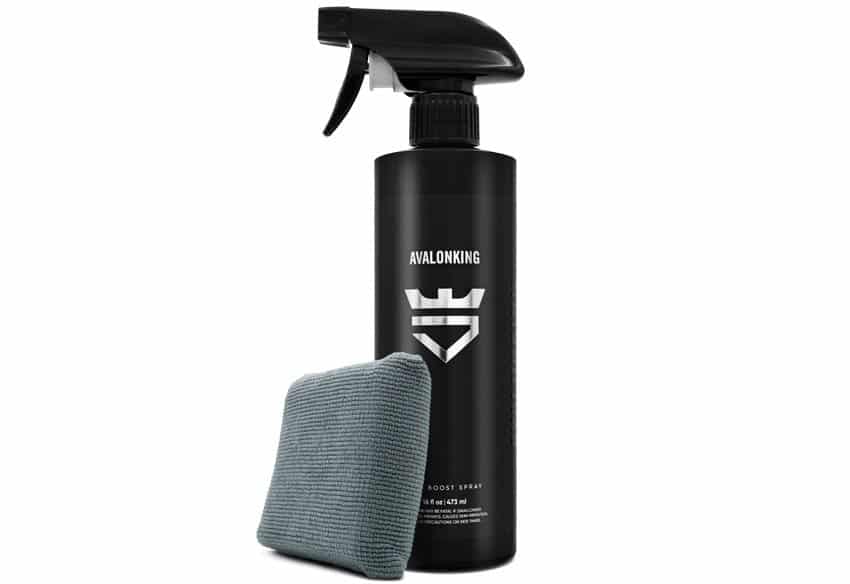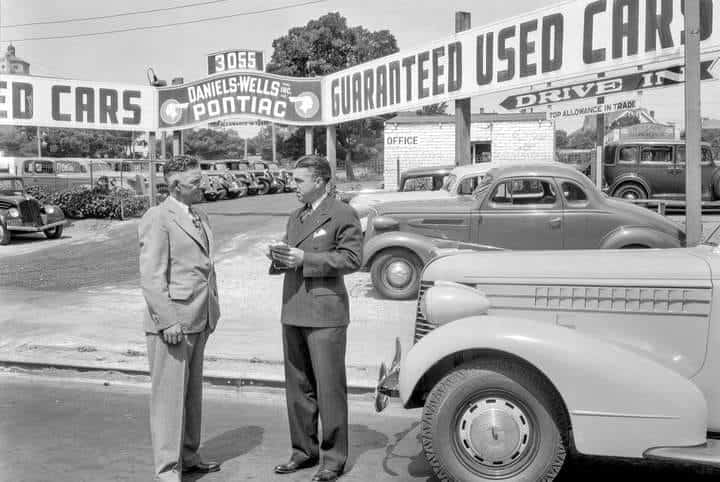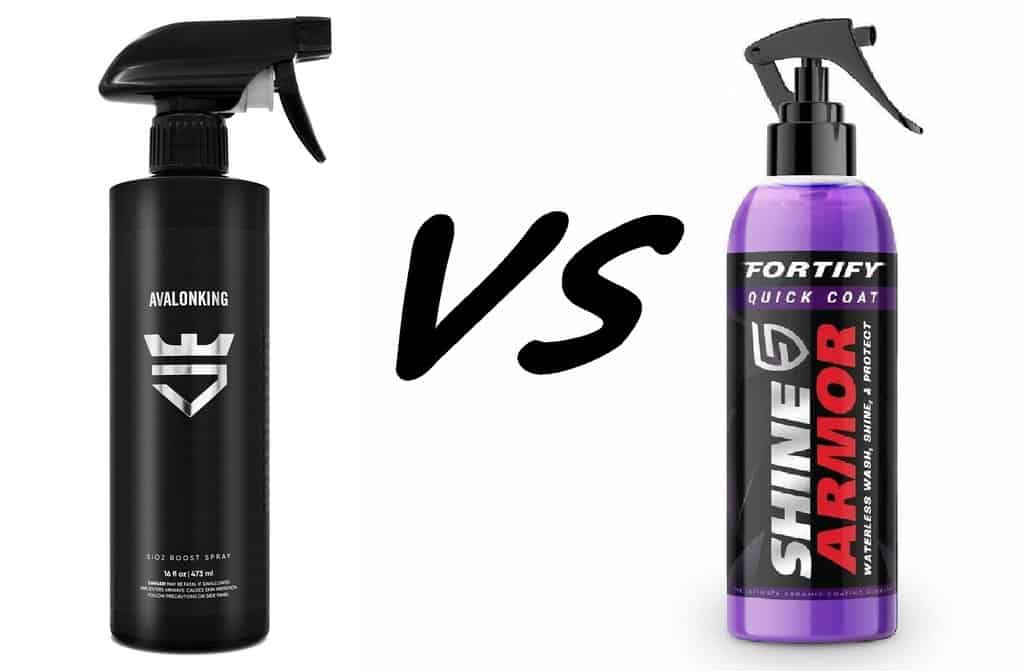When it comes to making a splash in the deep end of the “quick-spray” pool, you can’t just promise a glossy shine, an effortless wash, or a sensually smooth surface. You need to offer a layer of protection that packs enough hydrophobic properties, that it can singlehandedly kick both water and contaminants to the curb.
This is precisely what P&S Detail promoted when it released a product called “Bead Maker” a few years back. Originally engineered as a “mist-and-wipe” solution, Bead Maker was tested, shelved, released, and finally reintroduced to the market a few miles down the road as a social media staple.
Marketed around repellent capabilities, as well as for an ability to be “applied to wet or dry vehicles,” this inexpensive spray-on solution went on to become a solid seller for the P&S brand. Yet despite its popularity, there is still quite a bit of buyer confusion out there regarding Bead Maker.
People want to know, what’s Bead Maker made out of? How long does it last? Can you use it on top of protectants, like a 9H-rated nano-ceramic coating? Is Bead Maker a good surface protectant? How does Bead Maker measure up when compared to a dedicated SiO2 booster, like the all-new Ceramic Boost Spray from AvalonKing?
Furthermore, certain detailers within the online community have started referring to Bead Maker as a “Bead Faker,” and as you shall soon see, there are quite a few reasons why this name has stuck.
How Bead Maker is Intended to Work

Without getting too technical, here’s the skinny on the science behind Bead Maker’s ability to turn a normal automotive exterior into an ultra-slick surface.
Bead Maker is not a wax, nor is it a coating, a topper, or even a ceramic spray. It’s a polymer paint sealant. In Bead Maker’s case, its formula relies upon specialized monomers contained within the product, to create molecular cross-links, which polymerize on the surface, and bond with themselves to create a hydrophobic network.
However, contrary to the company’s claim that both wet and dry surfaces can be coated with the stuff, multiple professional detailers and DIY testers have found that Bead Maker only works when applied to a decontaminated surface. That said, the sealant is extremely easy to apply, and merely requires you to spray and wipe it away with a dry microfiber buffing towel.
As for follow-up applications, Bead Maker can be utilized as a drying aid (more on this later), or as a quick-detailer style topper, with the spray sealant requiring at least two hours of cure time before being exposed to the elements.
Once cured, P&S Detail claims that this product will repel contaminants and liquids alike, all while retaining a slick, glossy surface. It also apparently offers some level of UV protection, courtesy of UV filters and UV stabilizers, with the bead sealant’s manufacturer proclaiming that 2-months of longevity is completely achievable.
But veteran DIY enthusiasts and professional detailers alike have experienced some very different results, and not all of them are of the positive kind.
The Big Issue With Bead Maker
Some of the most common issues people experience with Bead Maker relate to sub-par protection results, damaging and unpleasant curing issues, lackluster longevity, and the staggering amount of product required for application.
Sure, at about $35 a gallon, Bead Maker is one of the least expensive protectants on the market, which does make it obtainable by the masses, but also raises a red flag for those in search of quality results that last.
Here are some verified real-world reviews we found, where people explain the issues they have experienced when using P&S Detail Bead Maker.
Heavy Application Required

Bead Maker may be inexpensive, but as independent tests of the product have proven, the product must be applied in massive amounts, especially during the first application. The manufacturer also suggests adding it to the exterior of the vehicle every week or so, which as you shall soon discover, is recommended for a reason.
“When I watched the maker’s video on how to apply, they encouraged using a lot of product on the surface and make it soaking dripping wet. This seems more like a manufacturer pushing wasting of product to make more money. That sort of set the tone of this product for me.”
“It’s not heavily concentrated, so you’ll use more product to get the results you desire.”
Quick Tip: Bead Maker is one of those products that was trendy a year or two back when people began to use it on ceramic coatings to speed up the curing process. This is a dumb idea. We’ve seen everything from leveling issues and heavy hazing, to sub-par durability and full-blown ceramic coating failure occur due to this methodology, so please refrain from utilizing this stuff to speed-up Armor Shield IX’s curing process.
Unimpressive Protection

Another issue people have begun to experience is that Bead Maker does not offer much concerning protection. While this can be said for pretty much any topper spray, there should at least be some level of water spot protection present for a monomer sealant like this, which in Bead Maker’s case, is not the case. There have also been numerous reports of the product not living up to its name, which has led to Bead Maker earning nicknames like “Gloss Maker” and “Bead Faker.”
“I expected that since Bead Maker is called ‘Bead Maker,’ it would really perform well in that category, but it really left something to be desired in that department, not to mention its poor durability.”
“If you are looking for a product that actually protects the paint and has great water beading/shedding properties, look elsewhere. I would only recommend using bead maker to boost gloss for a car show (sort of like a quick detailer), but even then, you have to apply it at least a 2 hours before driving, to let it cure properly which really doesn’t make it a good quick detailer.”
“I let the product cure for 24 hours before heading out on a road trip. All was well until it started to rain. At first I was impressed by the beading until I noticed a line starting to form where the wipers ended their stroke. The rain continued for an hour as the product ‘buildup’ continued at the beginning and end of each wiper stroke. Returning product and chalking it up to marketing hype.”
“Dust magnet nothing else… love the gloss but can’t live with the dust… plus
“I don’t know why people talk about it like it’s the end-all, be-all of protection. It just isn’t.”
Real World Curing Conundrums

Then there’s the whole issue of applying Bead Maker to nano ceramic coatings, which the company claims can be done. However, in real-world applications, this process can either be quite challenging, or completely impossible and here’s why.
Ceramic coatings from competing manufacturers all have their own specialized formulas, with varying levels of SiO2 and cure time requirements. These products also have their own contaminant and chemical rejection range, which means that they may not play well with toppers that aren’t engineered specifically for their unique formula.
Bead Maker is marketed as a product that begins to cure in 30-minutes, and as a sealant, can be ready to rock in as little as two hours. Unfortunately, its label suggests allotting a full eight hours of extra time to enable a full cure to take place. Compound that with the ambient air’s humidity levels, and the hydrophobic resistance levels of a nano-ceramic coating, and you suddenly have an undetermined curing time with no way to test its readiness.
Hell, even without a ceramic coating serving as a base protection, curing issues with this stuff abound, as problems with Bead Maker haze, and towel smudging remains all too common.
“Product spread and applied easily, but getting it to completely flash and wipe off without smudging and streaking was extremely difficult and time consuming. I used this on the vehicle’s glass as the true wipe off test, and it definitely failed. Multiple combinations of microfibers and techniques could not provide a 100% streak/smudge-free finish. If paint required the same effort as the glass did, the clear coat would definitely be marred during the process. What’s the point in protecting paint if you damage it in the process?”
One Big Longevity Let-Down

Claiming that a “mist-and-wipe” detailer sealant will last 2-months after just one application, without the use of any SiO2, is a bold claim. But it was one that P&S Detail made anyway when it launched Bead Maker, and as the following reviews show, the results some people have experienced have been anything but long-lasting.
“Plan on weekly to biweekly applications if the car gets wet or is washed… Longevity--extremely poor given the claims of months (possibly 2 weeks and 1-2 washes).”
“It breaks down after only one week. If you throw it on an entirely unprotected surface, the gloss and slickness starts to leave almost immediately after a couple days. And even worse than that, it’s not very hydrophobic, to begin with. Yeah, it’s cheap because it’s not effective.”
“After one wash, the beading effect is gone. The ‘gasp! Oh sweet baby Jesus’ wet look and ‘gasp’ slickness is silly YouTube product shilling at its best. Remember, this product was being sold for years and no one noticed until they started the social media hype BS.”
“After using this product several times I can honestly say it doesn’t give protection that lasts very long! After just 2 foam washes the entire protection is gone! One was just spray foam and rinse without a contact wash.”
What Makes AvalonKing’s Ceramic Boost Spray the Better Buy?

While affordability falls in Bead Maker’s favor, everything having to do with protection, surface rejuvenation, water rejection, longevity, ceramic coating compatibility, and shine fall squarely at the feet of AvalonKing’s Ceramic Boost Spray. The only other thing to consider would be ease of application, which in the sake of fairness remains a draw between the two products.
However, being that not a single bottle of Bead Maker contains a speck of SiO2, it cannot repel things like dust and debris. Instead, Bead Maker is known for attracting these airborne contaminants toward a vehicle’s exterior surfaces.
AvalonKing’s Ceramic Boost Spray coating toppers offer an industry-leading level of SiO2, insane levels of shine, water and dry airborne debris rejection capabilities, and bonds beautifully with Armor Shield IX ceramic coating products. It also packs the ability to revitalize an existing layer of nano-ceramic coating, while still serving as a sacrificial outer layer.
Oh, and did we mention that AvalonKing’s SiO2 Ceramic Boost Spray has been proven to form a layer of protection that lasts up to 6-months per application? I guess that whole “You get what you pay for…” bit applies to more than just steak dinners and wild weekends in Amsterdam.
Parting Shots

So if you are one of those people who is researching whether or not ceramic coating sprays are worth it, these final few sentences are for you.
If you’re turning toward Bead Maker for durability and chemical resistance, you’re going to want to turn elsewhere.
If you want long-lasting results every time, with 9H-rated levels of surface protection at an affordable DIY price, opt for Armor Shield IX by AvalonKing. There’s a reason why it continues to be the highest-rated consumer-grade nano-ceramic coating on the planet.
However, if you need something that packs an easy-to-apply spray formula, and want to keep things affordable, while still getting excellent protection, AvalonKing’s all-new SiO2 Ceramic Boost Spray is the way to go.
So don’t cheap-out and cheat your vehicle of the mirror-like shine and kick-ass coated surface it deserves, for when it comes to car detailing supplies, “You always get what you spray for.”












